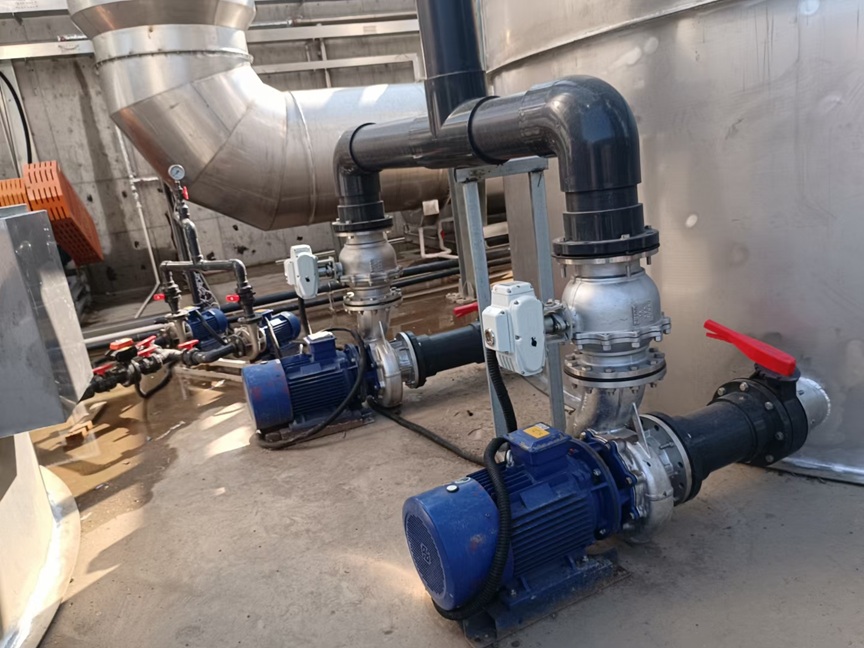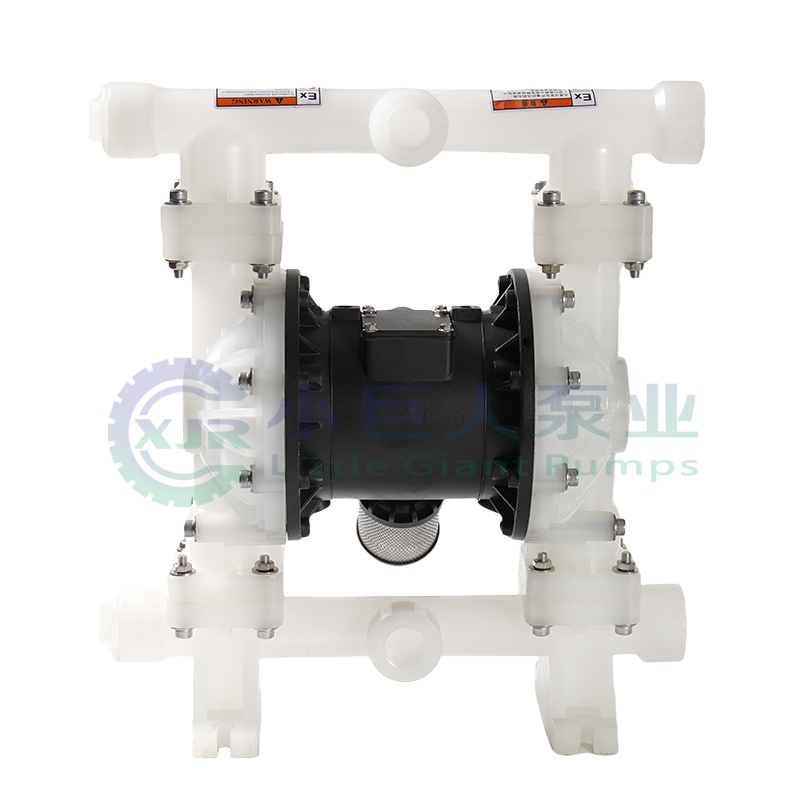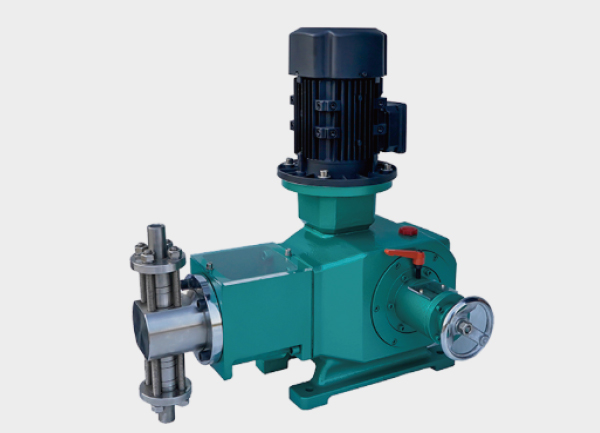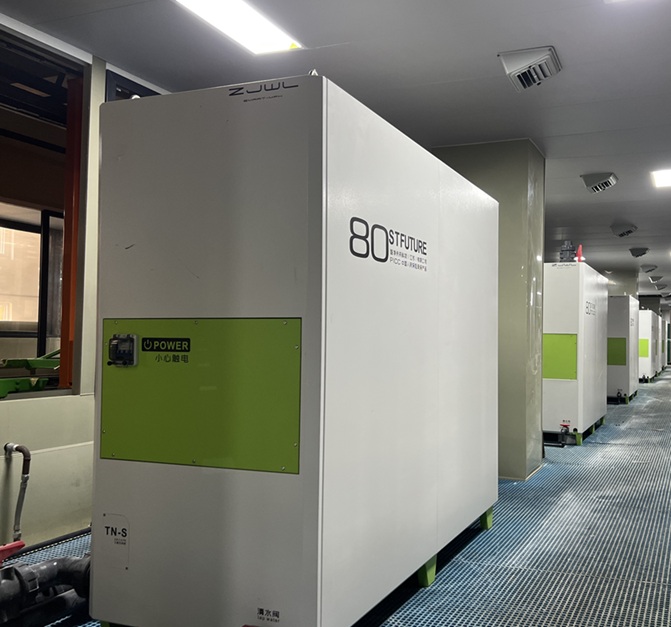In the electroplating industry, the application of chemical pumps is not about one-size-fits-all — it’s about matching pump characteristics to specific process requirements. From pre-treatment to post-treatment, each stage involves distinct chemical properties, flow conditions, and purity standards. This guide breaks down the topic into three core parts: application scenarios, selection criteria, and common mistakes, providing a full-spectrum understanding of how to choose and apply chemical pumps correctly in electroplating operations.

I. Core Application Scenarios: Process-Based Matching (with Fluid Characteristics + Recommended Pump Types)
Electroplating involves fluids ranging from strong acids to high-purity solutions and waste liquids containing heavy metals and residues. Pump selection must precisely align with these process differences.
1. Pre-Treatment Stage: Corrosion Resistance and Contamination Prevention
Pre-treatment determines the adhesion quality of the metal coating. The fluids here are often highly corrosive acids or bases, and any metal ion contamination can damage product quality.
• Acid Pickling (Removing Rust and Oxide Layers)
Fluids: Sulfuric acid (5–30%), hydrochloric acid (10–20%), hydrofluoric acid (5–15%)
Key Requirements: Excellent acid resistance; no metal ion leaching (Fe ions cause rusting)
Recommended Pumps:
For sulfuric/hydrochloric acid: PVDF or F46 fluoroplastic magnetic drive pump (seal-less, zero leakage, prevents acid vapor escape)
For hydrofluoric acid: All-fluoroplastic pump with ceramic impeller (HF attacks metal and ordinary plastics; ceramic offers superior corrosion resistance)
• Degreasing (Removing Oil and Residues)
Fluids: Alkaline degreasers (NaOH 5–10%) or solvent-based degreasers (e.g., trichloroethylene)
Key Requirements: Resistance to alkali or organic solvents; pump body must not dissolve
Recommended Pumps:
For alkaline degreasing: 316L stainless steel centrifugal pump (cost-effective, suitable for weak alkali environments)
For solvent degreasing: PPH magnetic drive pump (solvent-resistant and leak-free, ensures safety)
• Rinsing (Washing Residual Acid/Base)
Fluids: Slightly acidic or alkaline rinse water (pH 3–11)
Key Requirements: Rust prevention and low noise (since rinse tanks are near workstations)
Recommended Pump: 304 stainless steel self-priming pump (anti-rust, ≤65 dB noise, easy startup)
2. Electroplating Core Stage: Precision and Purity Control
This is the most critical stage where the coating forms. Fluids contain metal ions (Ni²⁺, Cr³⁺, etc.), and even minor flow or contamination issues can ruin plating quality.
• Electroplating Solution Circulation
Fluids: Nickel or chromium electrolyte (NiSO₄ 200–300 g/L, 40–60°C)
Key Requirements:
Stable flow (fluctuation ≤ ±2%) to ensure uniform coating thickness
Bubble-free design (bubbles cause pinholes)
No metal ion leaching
Recommended Pump: Titanium magnetic drive pump (excellent corrosion resistance, no leakage, stable flow, no air entrapment)
• Anode/Cathode Liquid Transfer
Fluids: Anode liquid (chromic acid 200–300 g/L) and cathode liquid (dilute sulfuric acid)
Key Requirements: Absolute leak prevention (mixing may release toxic gases or ruin plating chemistry)
Recommended Pump: Fully-sealed fluoroplastic magnetic pump (double-seal design, zero leakage, resistant to strong oxidants like chromic acid)
3. Post-Treatment Stage: Corrosion Resistance and Anti-Clogging Design
After plating, the coating undergoes passivation and rinsing. Fluids often contain residues, particles, or metal ions, requiring pumps that resist corrosion and clogging.
• Passivation Treatment
Fluids: Chromate (CrO₃ 5–10%), phosphate (H₃PO₄ 10–15%)
Key Requirements: Acid resistance and no particle shedding (to avoid coating defects)
Recommended Pump: Fluoroplastic centrifugal pump with reinforced F46 impeller (abrasion-resistant, prevents particle contamination)
• Wastewater Transfer
Fluids: Mixed liquids with acids, alkalis, heavy metals, and fine sludge (pH 1–13, solid content ≤5%)
Key Requirements: Anti-clogging, anti-corrosion, and self-priming capability
Recommended Pump: Rubber-lined self-priming pump (rubber lining resists mixed corrosion, large-passage impeller prevents clogging)
II. Key Pump Selection Principles: From Materials to Working Conditions
Proper selection depends on fluid properties, concentration, temperature, and solid content — not just corrosion resistance.
1. Corrosion Resistance: Match Material to Fluid Type and Conditions
| Fluid Type | Avoid Using | Recommended Materials |
|---|---|---|
| Strong acids (H₂SO₄, HCl) | Carbon steel, cast iron | PVDF, F46, Titanium |
| Strong oxidizers (HNO₃) | Stainless steel | All-fluoroplastic, Hastelloy |
| Strong alkalis (NaOH) | Standard plastics | 316L SS, PPH |
| Organic solvents (trichloroethylene) | Rubber, ABS | PPH, PTFE |
Concentration Impact: 98% sulfuric acid corrodes fluoroplastics 3× faster than 50% — use enhanced F40 fluoroplastics.
Temperature Impact: Every +10°C doubles corrosion rate; e.g., 60°C nickel solution requires high-temp titanium pumps (耐温 ≤120°C).
2. Fluid Purity: Avoid Metal Leaching and Particle Contamination
No metal ion contamination: Nickel or gold plating solutions cannot contact regular stainless steel. Use titanium or fluoroplastics.
No particle generation: Choose one-piece molded pump bodies over assembled ones to prevent micro-particle pollution.
3. Process Compatibility: Flow Rate, Head, and Solids Content
Flow Stability: Use variable-frequency magnetic drive pumps for steady flow (±1% precision).
High Flow Wastewater: Use large-diameter centrifugal pumps (≥50 mm inlet, ≥50 m³/h).
Solids Handling: For >3% solid content, use open or semi-open impeller pumps to prevent clogging.
III. Common Selection Mistakes and How to Avoid Them
Mistake 1: Using Fluoroplastic Pumps for All Corrosive Fluids
Problem: Fluoroplastics degrade under strong oxidants (e.g., nitric acid, hypochlorous acid).
Solution: Use Hastelloy or all-ceramic pumps for strong oxidizers.
Mistake 2: Ignoring Solid Content in Waste Fluids
Problem: Closed impellers clog easily, causing overload shutdown.
Solution: For >1% solids, use open or cutting impellers to prevent blockage.
Mistake 3: Using Cheap Cast Iron Pumps in Rinse Stages
Problem: Rust contamination causes plating defects and poor adhesion.
Solution: At least use 304 stainless steel pumps, or for budget options, reinforced PP pumps (rust-free and cost-efficient).
Conclusion
The application of chemical pumps in electroplating is a precise science: every process demands tailored material selection, structure design, and performance balance. Matching pumps to chemical characteristics not only ensures process stability and product quality, but also enhances safety and operational longevity — essential for modern, environmentally responsible electroplating operations.






